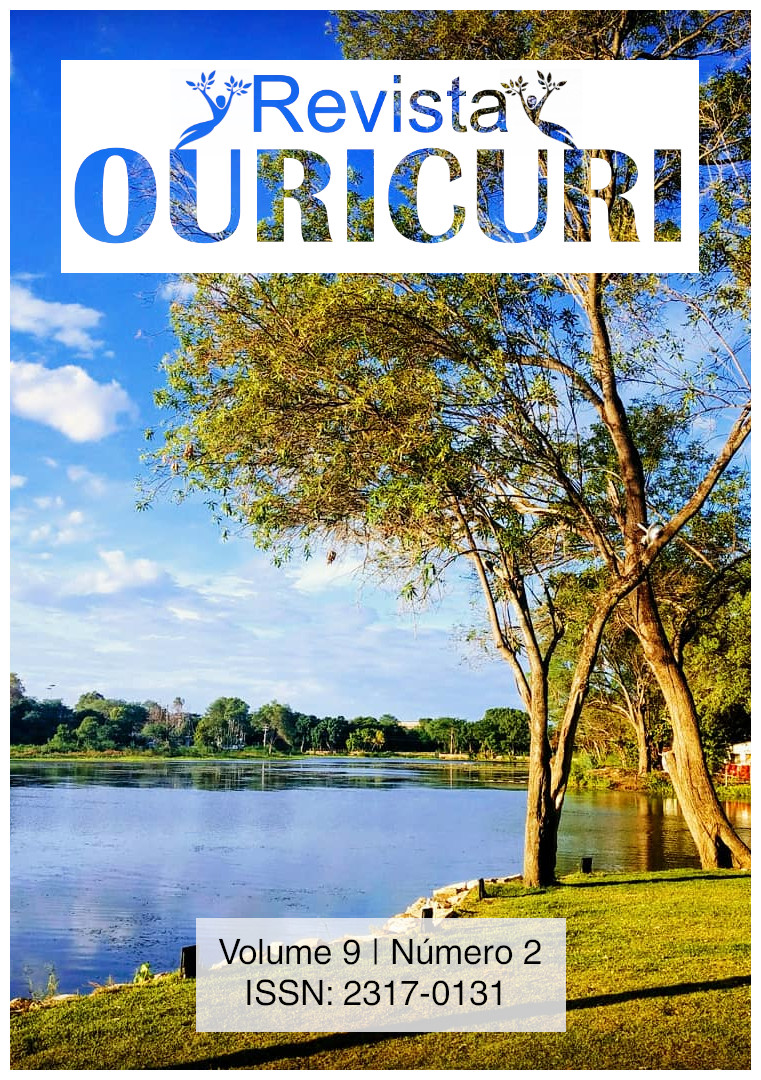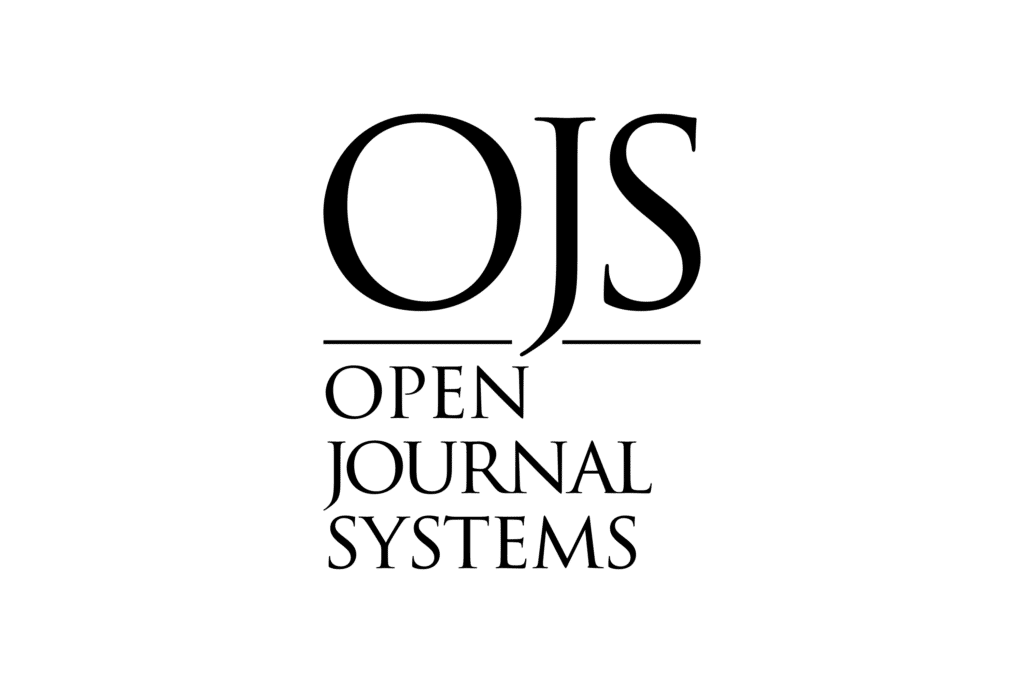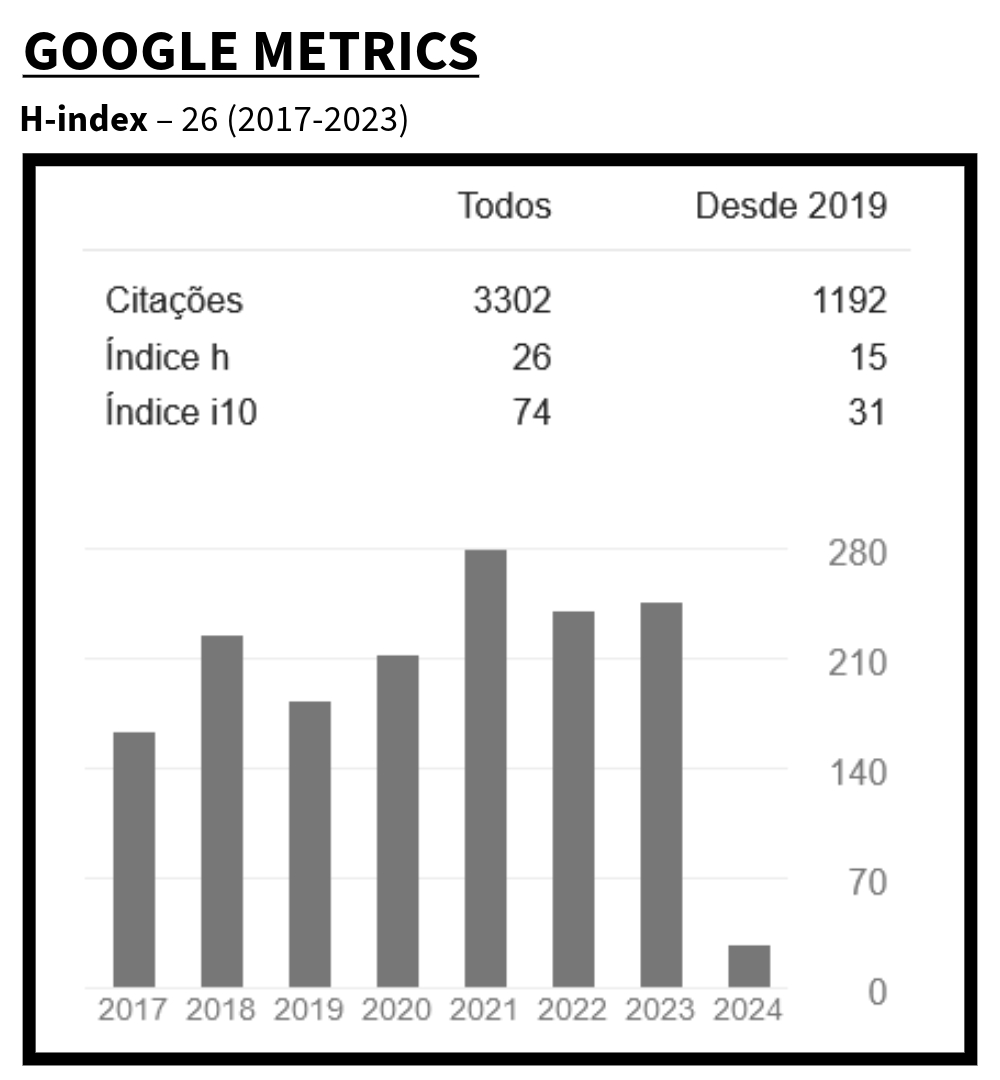A BIOCIÊNCIA DOS AGROTÓXICOS E SEU IMPACTO NA SAÚDE
DOI:
https://doi.org/10.29327/ouricuri.9.2-9Keywords:
Pesticidas, Mecanismos Celulares, Danos na Saúde.Abstract
O presente estudo trata-se de um enfoque biomolecular e celular dos danos a saúde produzidos pelos agrotóxicos na Biociência, como ciência interdisciplinar, que estuda os seres vivos, sua evolução, o ambiente em que vivem, o modo como se relacionam, etc. Realizou-se uma investigação de caráter cognoscitivo do estado da arte, em artigos publicados de 1979 a 2019. Desde os anos 60 são estudados os impactos na saúde causados pelos agrotóxicos e são fornecidas bulas a populações, com orientações das formas mais adequadas de aplicação de medidas de proteção a serem cumpridas pelos agricultores, para que esses agravos a saúde tenham um menor impacto, no estado de bem-estar deles e dos consumidores. Longe de serem cumpridos esses protocolos de prevenção, famílias inteiras, comunidades e ecossistemas no mundo; como por exemplo, o Brasil, estão expostos aos danos destas sustâncias que envenenam e são precursoras da morte. Esse artigo tem como objetivo realizar uma revisão dos estudos dos mecanismos celulares e algoritmos de como os agrotóxicos causaram problemas de saúde nos últimos 40 anos. A compreensão aprofundada do mecanismo de toxicidade sinérgica de pesticidas de múltiplos componentes, desempenha um papel importante no uso racional de pesticidas e na proteção da segurança alimentar.Downloads
References
Ader, R.; Felten D. L.; N. Cohen (eds.) Psychoneuroimmunology, 2nd ed. San diego: Academic Press, 1991.
Agarwal, A.; Kasinathan, A; Ganesan, R.; Balasubramanian, D.; Bhaskaran, J.; Suresh, S.; Srinivas, R.; Aravind, K. V.; Sivalingam, N. Curcumin induces apoptosis and cell cycle arrest via the activation of reactive oxygen species-independent mitochondrial apoptotic pathway in Smad4 and p53 mutated colon adenocarcinoma HT29 cells. Nutriton Research, 51, 67-81, 2018.
Agência Nacional de Vigilância Sanitária. Relatório Final do Programa de Analise de Resíduos de Agrotóxicos em Alimentos (PARA) ANVISA, 2010.
Alavanja, M. C.; Hofmann, J. N.; Lynch, C. F.; Hines, C. J.; Barry, K. H.; Barker, J.; Buckman, D. W.; Thomas, K.; Sandler, D.P.; Hoppin, J. A.; Koutros, S.; Andreotti, G.; Lubin, J. H.; Blair, A.; Beane Freeman, L. E. Non-hodgkin lymphoma risk and insecticide, fungicide and fumigant use in the agricultural health study. PLoS One, 9(10), 800-814, 2014.
Alberts, B. Biologia Molecular da Célula. 6ª ed. Porto Alegre: Artmed, 2017.
Amaroli, A; Aluigi, M. G; Falugi, C; Chessa, M. G. Effects of the neurotoxic thionophosphate pesticide chlorpyrifos on differentiating alternative models. Chemosphere, 90(7), 2115-2122, 2013.
Baird, C. Chemistry in your life. 2. ed. New York: W. H. Freeman, 2006.
Baldwin Jr., A. The transcription factor NF-κB and human disease. The Journal Clinical Investigation, 107(1), 1-5, 2001.
Bila, D. M.; Dezotti, M. Desreguladores endócrinos no meio ambiente: efeitos e consequências. Quimica. Nova, 30(3), 651-666, 2007.
Blakley, B. R.; Yole, M. J; Brousseau, P; Boermans, H; Fournier, M. Effect of chlorpyrifos on immune function in rats. Veterinary and Human Toxicology 41(3), 140–144, 1999.
Blalock, J. E. The syntax of immune–neuroendocrine communication. Immunology Today, 15, 504–511, 1994.
Blanco, G. A. Immune response to environmental exposure. Elsevier. 2011.
Bolognesi, C. Genotoxicity of pesticides: A review of human biomonitoring studies. Mutation Research/Reviews in Mutation Research, 543(3), 251–272, 2003.
Borovikova, L. V.; Ivanova, S.; Zhang, S.; Yang, H.; Botchkina, G. I.; Watkins, L. R.; Wang, H.; Abumrad, N.; Eaton, J. W.; Tracey, K. J. Vagus nerve stimulation attenuates the systemic inflammatory response to endotoxin. Nature 405, 458–562, 2000.
Buratti, F. M.; Volpe, M. T.; Meneguz, A.; Vittozzi, L.; Testai, L. CYP-specific bioactivation of four organophosphorothionate pesticides by human liver microsomes. Toxicology and Applied Pharmacology, 86, 143–154, 2003.
Chauffaille, M. L. L. F. A propósito da apoptose em LMC: estudos promissores. Rev. Bras. Hematol. Hemoter. São José do Rio Preto, 27(2), 81-82, 2005.
Chen, C.; Wang, Y.; Qian, Y.; Zhao, X.; Wang, Q. The synergistic toxicity of the multiple chemical mixtures: implications for risk assessment in the terrestrial environment. Environment International, 77, 95-105, 2015.
Cheng, K.; Sano, M.; Jenkins, C. H.; Zhang, G.; Vernekohl, D.; Zhao, W.; Wei, C.; Zhang, Y,; Zhang, Z.; Liu, Y.; Cheng, Z.; Xing, L. Synergistically enhancing therapeutic effect of radiation therapy with radiation activatable and reactive oxygen species-releasing nanostructures. ACS Nano, 99(2), 4496-4958, 2017.
Costa, V. I. B; Sarpa, M.; Friedrich, K. Environmental and occupational exposure to pesticides and the non- Hodgkin lymphoma. Saúde Debate | Rio de Janeiro, 41(112), 49-62, 2017.
Dan Dunn, J.; Alvarez, L. A.; Zhang, X.; Soldati, T. Reactive oxygen species and mitochondria: a nexus of cellular homeostasis. Redox Biology, 6, 472-485, 2015.
Dıaz-Resendiz, K. J. G.; Toledo-Ibarra, G. A.; Girón-Pérez, M. I. Modulation of immune response by organophosphorus pesticides: Fishes as a potential model in immunotoxicology. Journal of Immunology Research, 2015, 1-10, 2015.
Felten, S. Y.; Felten, D. L. Neural-immune interactions. Progress in Brain Research, 100, 157–162, 1994.
Fu, D. J.; Li, P.; Song, J.; Zhang, S. Y.; Xie, H. Z. Mechanisms of synergistic neurotoxicity induced by two high risk pesticide residues – Chlorpyrifos and Carbofuran via oxidative stress. Toxicology in Vitro, 54, 338–344, 2019.
Galindo RJ, Medina JM, Villagrana LC, Ibarra CL. Condições ambientais e de poluição da lagoa Huizache-Caimanero, no noroeste do México. Boletim de Poluição Marinha. 1 de dezembro; 34 (12): 1072-7, 1997.
Galindo, J. G. R; Alegria, H. Toxic Effects of Exposure to Pesticides in Farm Workers in Navolato, Sinaloa (MEXICO). Revista Contaminación Ambiental, 34(3), 505-516, 2018.
Galindo-Leal C. Overestimation of deer densities in Michilia Biosphere Reserve, Durango, Mexico. The Southwestern Naturalist. Jun 1;37(2):209-12.,1992.
Gammon, D. W.; Liu, Z.; Chandrasekaran, A.; Shaaban, F.; El-Naggar.; Kuryshev, Y. A.; Jackson, S. Pyrethroid neurotoxicity studies with bifenthrin indicate a mixed Type I/II mode of action. Published online in Wiley Online Library, 75(4), 1190-1197, 2019.
Germolec, D.R, Spalding, J., Boorman, G.A, Wilmer, J.L, Yoshida, T., Simeonova, P.P & Burleson, F. O arsênico pode mediar a neoplasia da pele por estimulação crônica de fatores de crescimento derivados de queratinócitos. Mutation Research/Reviews in Mutation Research. 386(3), 209-218, 1997.
Goulding, K. Nitrate leaching from arable and horticultural land. Soil use and management, 16,145-151, 2000.
Greer, J. P.; Reddy, N. M.; Willians, M. E. Non- Hodgkin Lymphoma in Adults. Wintrobe’s clinical hematology, 41(112), 1827-1837, 2009.
Guerra, M. R.; Gallo, C. V. M.; Mendonça, G. A. S. Risco de câncer no Brasil: tendências e estudos epidemiológicos mais recentes. Revista Brasileira de Cancerologia, 51(3), 227-234, 2005.
Gupta, R. C; Miller, I. R. M; Malik, J. K; Doss, R. B; Dettbam, W. D; Milatovic, D. Insecticides. Livro Biomarker in toxicologia. Chapter 20. Second edition. Elsevier, p.455-475, 2019.
Hayashi, G; Cortopassi, G. Oxidative stress in inherited mitochondrial diseases. Free Radical Biology and Medicina, 88(A), 10-17, 2015.
Hendriks, C; Gibson, H.; Trett, A.; Python, A.; Weiss, D.; Vrieling, A.; Moyes, C. Mapping geospatial processes affecting the environmental fate of agricultural pesticides in Africa. EarthArXiv, 2019. Disponível em: https://doi.org/10.31223/osf.io/db2qz. Acesso em: 30 de maio 2019.
Israël A. The IKK complex, a central regulator of NF-kappaB activation. Cold Spring Harb Perspect Biol, 2(3), a000158, 2010.
Karin, M.; Greten, F. NF-κB: Linking inflammation and immunity to cancer development and progression. Nature, 5(1), 749-759, 2005.
Kumar, A.; Bhaskar, A.; Chandra, S.; Sasmal, D.; Mukhopadhyay, K. M.; Sharma, N. Mechanism of deltamethrin induced immunotoxicity: Current and future perspectives. Receptors and Clinical Investigation, 2(2), 1-7, 2015.
Lee, I.; Eriksson, P.; Fredriksson, A.; Buratovic, S.; Viberg, H. Developmental neurotoxic effects of two pesticides: behavior and neuroprotein studies on endosulfan and cypermethrin Toxicology, 335, 1-10, 2015.
Luo, J. L.; Kamata, H.; Karin, M. IKK/NF-kappaB signaling: balancing life and death – a new approach to cancer therapy. The Journal of Clinical investigation, 115, 2625–2632, 2005.
Maitra, S. K. A.; Mitra, A. Testicular functions and serum titers of LH and testosterone in methyl parathion-fed roseringed parakeets. Ecotoxicology and Environmental Safety, 71(1), 236–244, 2008.
Mantovani, A.; Allavena, P.; Sica, A. Cancer-related inflammation. Nature, 454(24), 436–444, 2008.
Marx, C.; Ehrhart-Bornstein, M.; Scherbaum, W. A.; Bornstein, S. R. Regulation of adrenocortical function by cytokines—relevance for immune–endocrine interaction. Hormone and Metabolic Research, 30(67), 16-20, 1998.
Mitra, A.; Sarkar, M.; Chatterjee, C. Modulation of Immune Response by Organophosphate Pesticides: Mammals as Potential Model. Revista: Proc Zool Soc, 72(1), 13–24, 2019.
Murphy, E. C.; Springer, A. M.; Roseneau, D. G. Population status of Common Guillemots Uriaaalge at a colony in western Alaska: Results and simulations. Ibis International Journal of Avian Science, 128(3), 348–363, 1986.
Nguyen, D. P.; Li, J.; Yadav, S. S.; Tewari, A. K. Recent insights into NF‐κB signalling pathways and the link between inflammation and prostate cancer. BJU International, 114(2), 168-176, 2014.
Oliveira, F. S. Influência do praguicida diclorvós sobre o desenvolvimento de lesões prostáticas induzidas por MNU em ratos – avaliação de marcadores moleculares de inflamação. p 14-37, 2019. Disponível em: https://repositorio.unesp.br/bitstream/handle/11449/181983/santos_fo_me_assis_par.pdf?sequence=11&isAllowed=y. Acesso em: 30 de maio 2019.
Pahl, H. L. Activators and target genes of Rel/NF-kappaB transcription factors. Oncogene, 18, 6853– 6866, 1999.
Parrillo, J. E.; Fauci, A. S. Mechanisms of glucocorticoid action on immune processes. Annual Review 19(1), 29–201, 1979.
Pavani, N. D. Pesticidas: uma revisão dos aspectos que envolvem esses compostos. 2016. Trabalho de Conclusão de Curso (licenciatura - Química) - Universidade Estadual Paulista, Faculdade de Ciências, 2016. Disponível em: http://hdl.handle.net/11449/136596. Acesso em: 25 de maio de 2019.
Pham, C. G.; Bubici, C.; Zazzeroni, F.; Papa, S.; Jones, J.; Alvarez K. Ferritin heavy chain upregulation by NF-kappaB inhibits TNFalphainduced apoptosis by suppressing reactive oxygen species. Cell, 119(4), 529–542, 2004.
Puente, B. N.; Kimura, W.; Muralidhar, S. A.; Moon, J.; Amatruda, J. F.; Phelps, K. L.; Grinsfelder, D.; Rothermel, B. A.; Chen, R.; Garcia, J. A.; Santos, S. Thet, E. Mori, M. T. Kinter, P. M. Rindler, S. Zacchigna, Mukherjee; D. J. Chen; A. I. Mahmoud; M. Giacca; P. S. Rabinovitch; A. Aroumougame; A. M. Shah; L. I. Szweda; H. A. Sadek. The oxygen-rich postnatal environment induces cardiomyocyte cell-cycle arrest through DNA damage response. Cell, 157 (3), 565-579, 2014.
Rahimi, R.; Abdollahi, M. A review on the mechanisms involved in hyperglycemia induced by organophosphorus pesticides. Pesticide Biochemistry and Physiology, 88(2): 115–121, 2007.
Ranjan, S.; Baltimore, D. lnducibility of K lmmunoglobulin Enhancer-Binding Protein NFKB by a Posttranslational Mechanism. Cell, 47, 921-926, 1986.
Rubin, R. T.; O’Toole, S. M.; Rhodes, M. E.; Sekula, L.K.; Czambel, R.K. Hypothalamo-pituitary-adrenal cortical responses to low-dose physostigmine and arginine vasopressin administration: Sex differences between major depressives andmatched control subjects. Psychiatry Research, 89, 1–20, 1999.
Salerno, C.; Sacco, S; Panella, M.; Berchialla, P.; Vanhaecht, K.; Palin, L. A. Cancer risk among farmers in the Province of Vercelli (Italy) from 2002 to 2005: an ecological study. Annali di igiene: medicina preventiva e di comunità, 26(3), 255-263, 2014.
Schug, T. T.; Janesick, A.; Blumberg, B.; Heindel, J. J. Endocrine disrupting chemicals and disease susceptibility. J. Steroid Biochem, 127, 204-215, 2011.
Shukla, S.; MacLennan, G. T.; Fu, P.; Patel, J.; Marengo, S. R.; Resnick, M. I.; Gupta, S. Nuclear factor-κB/p65 (Rel A) is constitutively activated in human prostate adenocarcinoma and correlates with disease progression. Neoplasia, 6(4), 390–400, 2004.
Sies, H. Oxidative stress: a concept in redox biology and medicine. Redox Biol, 4,180-183, 2015.
Sikka, S. C.; Wang, R. Endocrine disruptors and estrogenic effects on male reproductive axis. Asian Journal of Andrology, 10(1),134-145, 2008.
Silva, C. M. M.; Fay, E. F. Agrotóxicos e ambiente. Brasília: Embrapa Informação Tecnológica, 400,17-76, 2004.
Silva, L. S; Félix, M. R. M; Araújo, M. V. S; Perace, I. M. Revolução Verde: reflexões acerca da questão dos agrotóxicos. Revista Científica do Centro de Estudos em Desenvolvimento Sustentável da UNDB, 1(4), 1-24, 2016.
Sogorb, M. A.; Vilanova, E. Enzymes involved in the detoxification of organophosphorus, carbamate and pyrethroid insecticides through hydrolysis. Toxicology Letters, 128(1), 215–228, 2002.
Soto, A.; Sonnenschein, C. Environmental causes of cancer: endocrine disruptors as carcinogens Nature Reviews Endocrinology, 6, 363-370, 2010.
Stiller-Winkler, R.; Hadnagy, W.; Leng, G.; Straube, E.; Idel, H. Immunological parameters in humans exposed to pesticides in the agricultural environment. Toxicology Letters, 107(1), 219–224, 1999.
Tarnowski C.P, Ignelzi J.R MA, Wang W, Taboas J.M, Goldstein S.A, Morris M.D. Earliest mineral and matrix changes in force‐induced musculoskeletal disease as revealed by Raman microspectroscopic imaging. Journal of Bone and Mineral Research. Jan;19(1):64-71. 2004.
Timofeeva, O. A.; Roegge, C. S.; Seidler, F. J.; Slotkin, T. A.; Levin, E. D. Persistent cognitive alterations in rats after early postnatal exposure to low doses of the organophosphate pesticide, diazinon. Neurotoxicology and Teratology, 30(1), 38–45, 2008.
United Nations Conference on Trade and Development. Wake up before it is too late: Make agriculture truly sustainable now for food security in a changing climate. UNCTD, 2013. Disponível em: https://unctad.org/en/pages/PublicationWebflyer.aspx?publicationid=666. Acesso em: 20 de março 2019.
Vasilic, Z.; Drevenkar, V.; Rumenjak, B.; Stengl, B.; Frobe, Z. Urinary excretion of diethylphosphorus metabolites in persons poisoned by quinalphos or chlorpyrifos. Archives of Environmental Contamination and Toxicology, 22(4), 351–357,1992.
Veronesi, B. M.; Ehrich, J. K.; Blusztajn, M.; Ortgiesen, O.; Durham, H. Cell culture models of interspecies selectivity to organophosphorous insecticides. Neurotoxicology, 18(1), 283–297, 1996.
Wang, N.; Shi, L.; Kong, D.; Cai, D.; Cao, Y.; Liu, Y.; Pang, G.; Yu, R. Accumulation levels and characteristics of some pesticides in human adipose tissue samples from Southeast China. Chemosphere, 84(7), 964-971, 2011.
Wang, Y. S.; Wu, J.; Chen, C.; Zhang, Z.; Xu, G.; Li, L.; Cai, W.; Shen, Q. Wang Single and joint toxicity assessment of four currently used pesticides to zebrafish (Danio rerio) using traditional and molecular endpoints. Chemosphere, 192, 14-23, 2018.
Weiss, B; Amler, S; Amler, R. W. Pesticides. Pediatrics, 113(4), 1030-1036, 2004.
Zhang, S; T. Li, Y.; Zhang, H.; Xu, Y.; Li, X.; Zi, H.; Yu, J.; Li, C.Y.; Jin, H.M.; Liu, A. A new brominated chalcone derivative suppresses the growth of gastric cancer cells in vitro and in vivo involving ROS mediated up-regulation of DR5 and 4 expression and apoptosis. Toxicology and Applied Pharmacology, 309, 77-86, 2016.
Downloads
Published
How to Cite
Issue
Section
License
Authors who publish in this journal agree to the following terms:
a) Authors maintain copyright and grant the magazine the right of first publication, with the work simultaneously licensed under the Creative Commons Attribution License which allows sharing of the work with recognition of authorship and initial publication in this magazine.
b) Authors are authorized to enter into additional contracts separately, for non-exclusive distribution of the version of the work published in this journal (e.g., publishing in an institutional repository or as a book chapter), with recognition of authorship and initial publication in this journal.
c) Authors are allowed and encouraged to publish and distribute their work online (e.g. in institutional repositories or on their personal page) as this can increase the impact and citation of the published work (See The Effect of Open Access).













 B1 (2017-2020)
B1 (2017-2020)



















